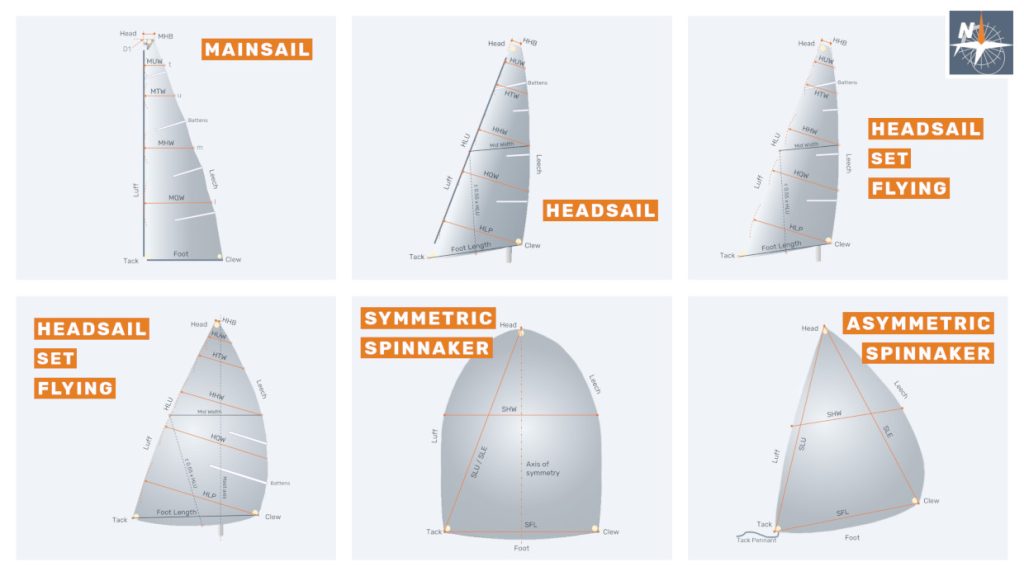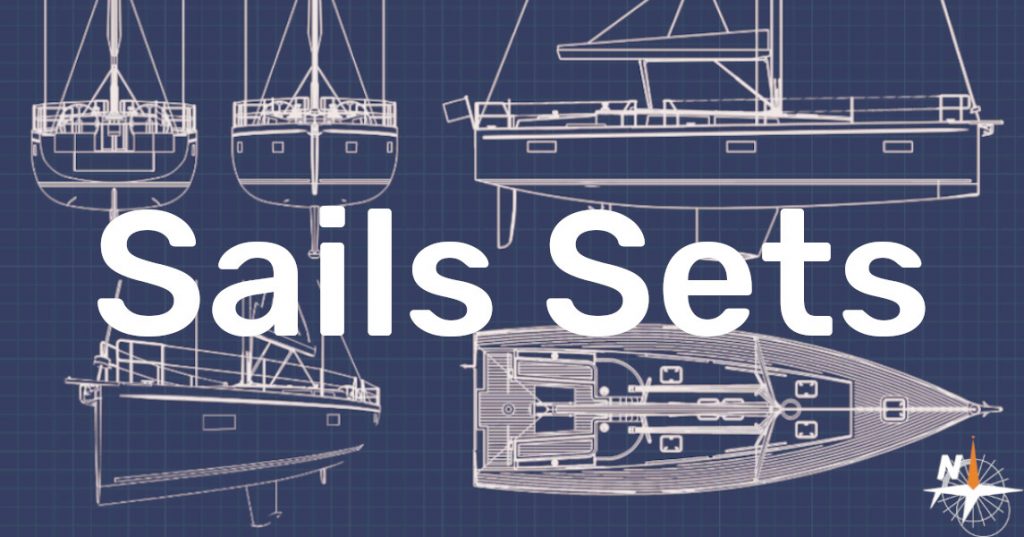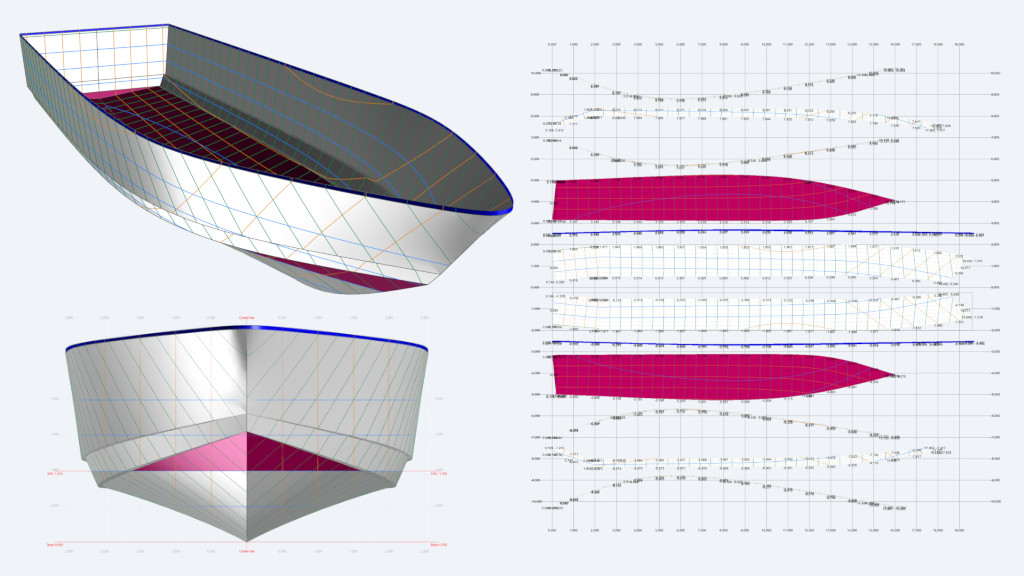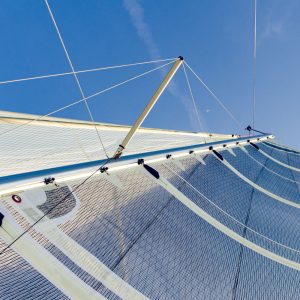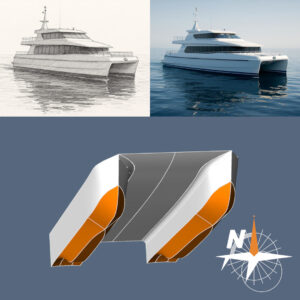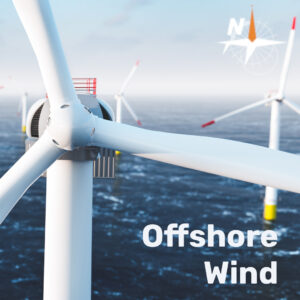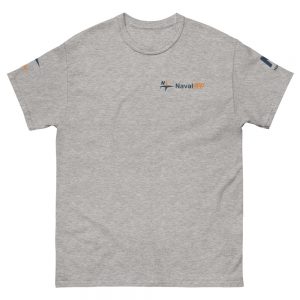Headsails “Set Flying” aerodynamic coefficients (calculation)
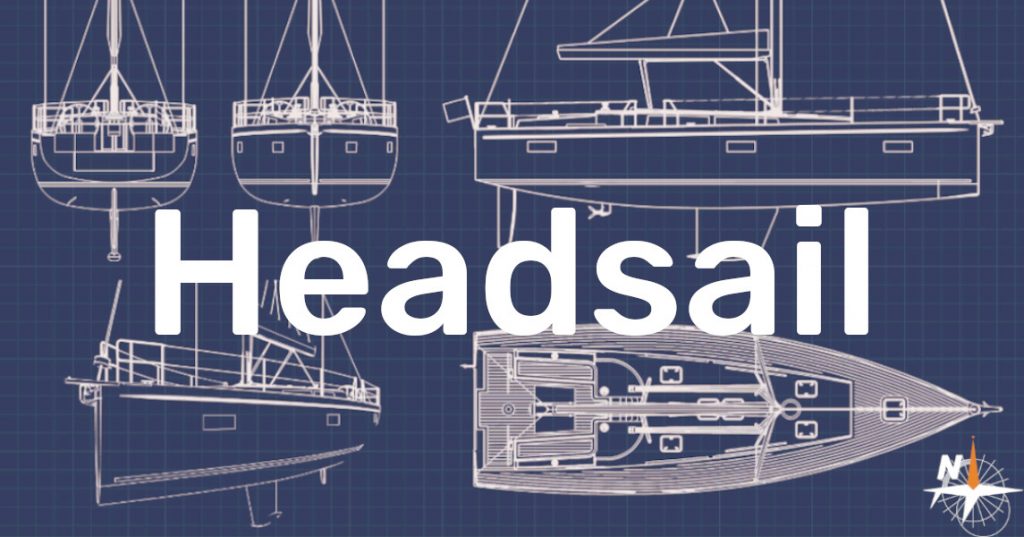
Calculation template
How does it work?
A headsail is a sail set forward of the mast, or of the foremast mast if there is more than one mast, where the measurement between the half luff point and the half leech point, known as mid width, is less than 75% of the foot length (if mid width length ≥ 75% of the foot length, the sail is considered a spinnaker).
Headsails may be set on the forestay or set flying. The IMS defines a sail Set Flying as a sail set with no sail edge attached to the forestay.
With this template, you can calculate the aerodynamic coefficients of flying headsails as determined by the Offshore Racing Congress (ORC).
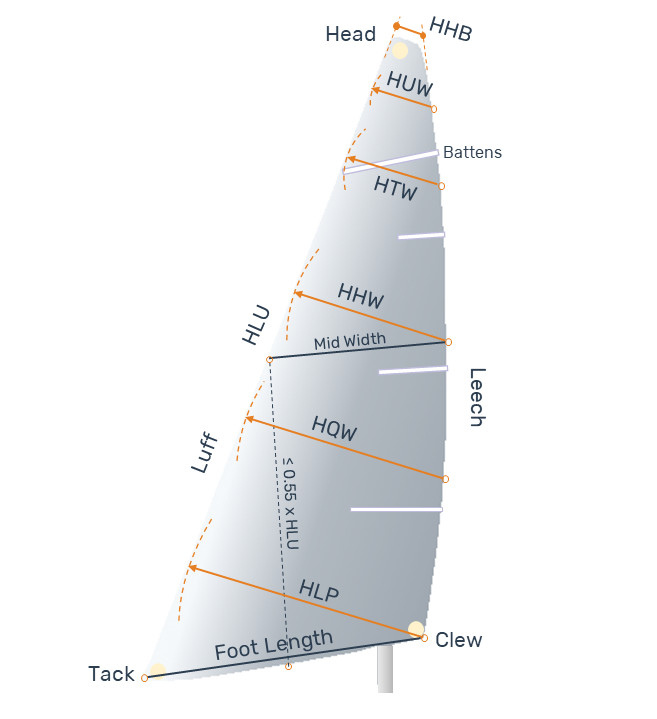

There is a wide variety of flying headsails: they can be conceived for close reaching and upwind sailing, or they can be designed to give their maximum performance at wider angles. The driver of the flying headsails performances with wind angle has been identified in the ratio HHW/HLP, ranging from 50% (jib-like performance) to 85% (spinnaker-like performance), where:
| Thrust | Driving Force Coefficients. |
| Side | Heeling Force Coefficients. |
| Lift | Lift Coefficients. |
| Drag Total | Drag Total = Zero-lift Parasite Drag + Induced Drag. The Induced Drag component also includes the effect of the variation of Parasite Drag with lift (Quadratic Parasite Drag). |
| Drag | Drag = Zero-lift Parasite Drag = Friction Drag + Pressure Drag. Parasite Drag is also known as Viscous Drag. Pressure Drag is also known as Form Drag. |
| Eff. span | Effective Height / Reference Height. |
| CE | Height of the Aerodynamic Center of Effort / Reference Height. |
See also:
- International Measurement System: Sails.
- Mainsail aerodynamic coefficients (calculation).
- Headsail aerodynamic coefficients (calculation).
- Spinnakers aerodynamic coefficients (calculation).


